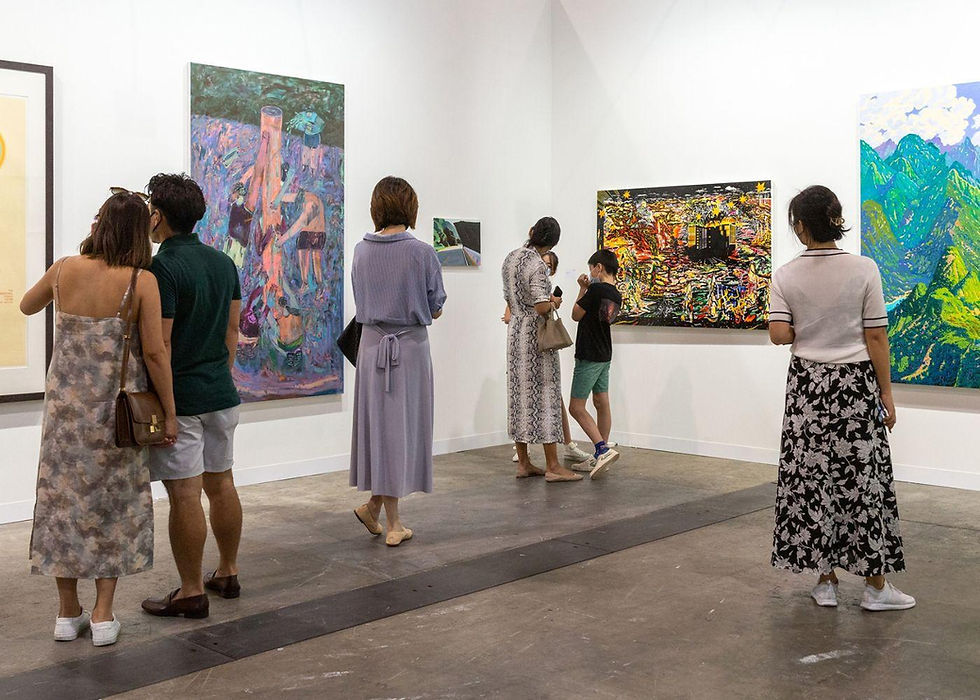The Art of Today: Unveiling the True Essence of Separating Art from Art Marketing
- Phil McNally

- Aug 15, 2023
- 3 min read

Welcome to our guide on "The Art of Today: Unveiling the True Essence of Separating Art from Art Marketing." We try and explore the relationship between art and art marketing, delving into the challenges that arise when the boundaries between the two become blurred, and finally, unravel the true essence of separating art from art marketing.
The Role of Art Today
The relationship between art and art marketing is intricate. On one hand, marketing has the potential to amplify the reach and influence of art. On the other, if not handled carefully, it can risk compromising the balance of doing both.
What Is Art? <===Good Question
Art is a manifestation of human creativity and imagination, often visual, that is appreciated for its beauty, emotional power, or thought-provoking qualities - so says Webster/Wikipedia. It is an outlet for expression, a canvas for ideas, a mirror reflecting society, and a tool for communication. Art is subjective, its interpretation relying on the viewer's experiences, emotions, and perspective.
The value of art is not just in the physical piece, but in the process of creation, where the artist pours their emotions, thoughts, and experiences into their work. This process is a journey, often therapeutic, allowing the artist to delve into their subconscious, exploring and confronting their feelings and thoughts.
Art does not confine itself to paintings and sculptures; it is a broad stroke encompassing a multitude of expressions. Literature, music, dance, theatre, film, photography, fashion - these are all art forms, each with its unique medium of expression and impact. T
What Is Art Marketing?
Art marketing is the process of promoting and selling art. It involves multiple steps, from identifying the target audience and positioning the artwork, to developing sales strategies and executing promotional campaigns.
Marketing not only sells the art but also helps in building an artist’s reputation. It creates a bridge between the artist and the audience, enabling the artist to reach a wider viewership and establish a market presence. This process, however, requires a careful balancing act, ensuring that the marketing efforts do not overshadow the art itself. This is where many artists fail.
While marketing is essential, it's important to remember that it is the servant and not the master of art. Its primary function is to facilitate the sale and exposure of art, without diluting its essence.
Art and art marketing share a symbiotic relationship. Art needs marketing to reach its audience, and marketing needs art to have something of value to promote.
The Balancing Act
However, this relationship requires a delicate balancing act. Marketing should never overshadow the art it promotes. It should accentuate the art, not alter or suppress it.
The Role of Art Today
Art today plays a critical role in preserving the integrity of this relationship. It's crucial that marketing respects the art itself, ensuring that the art's message remains unfiltered and true to the artist's vision.
Potential Challenges of Blending Art and Art Marketing
When merging art with marketing, several challenges may surface.
1. **Risk of Overshadowing:** There's a risk that marketing might take on more time and attention then the art itself. The focus could shift from the painting to its marketability, potentially sabotaging any growth.
2. **Pressure to Conform:** Artists may feel pressured to conform their artwork to market demands, potentially compromising their creativity.
3. **Over-commercialization:** Over-commercialization could lead to a depreciation of the art’s intrinsic value.
While these challenges are real, they can be navigated with careful planning and a commitment to maintaining the art's integrity.
Creative Approaches to Unleashing Creativity
When it comes to maintaining authenticity in art and art marketing, there are several creative approaches one can adopt.
1. **Staying True to Your Vision:** As an artist, stay true to your vision. Let your art be a reflection of your sensibilities and perspectives. Do not compromise all this for marketability.
2. **Transparent Marketing:** Be transparent in your marketing. Let your audience connect with your art in its unadulterated form.
3. **Valuing Art over Commerce:** Prioritize art over commerce. Remember, the primary goal of art is to express, not to impress. Stick to this principle, and success will follow.
By adopting these approaches, artists can successfully separate art from art marketing,.
Conclusion
It's important to emphasize that the true essence of art lies in the art itself. Art is an expression of an artist's unique perspective, and it carries a message that is always open to interpretation.
Marketing should always serve to amplify this connection, not interfere with it. It should enhance the art, not dictate it.
Every piece of art carries a piece of humanity within it. And preserving this humanity, this authenticity, is what truly separates art from art marketing.





Comments